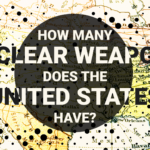In support of the Megatons to Megawatts program
By Laura S. H. Holgate, Robert E. Schultz | October 23, 2008
“There will never be a 100 percent guarantee of security for our people, the economy, and our society. We must resist the urge to seek total security–it is not achievable and drains our attention from those things that can be accomplished.” —Gilmore Commission, December 2003
In the battle to thwart nuclear terrorists, the emphasis must fall on maximizing the distance between the “nuclear” (i.e., highly enriched uranium [HEU] or plutonium) and the “terrorists” (i.e., sophisticated, well-resourced groups bent on catastrophic attacks). The most effective way to do this is to reduce global stocks of weapons-usable materials.
As Pavel Podvig points out in his July Bulletin Web-Edition column, the U.S.-Russia “Megatons to Megawatts” program that is designed to eliminate 500 metric tons of HEU has been one of the most successful and cost-effective programs to reduce nuclear danger. Nonetheless, Podvig argues that extending or expanding the program could increase the risk of nuclear terrorism. Quite simply, he is wrong–his conclusion failing to take into account several key points that add up to a compelling case for moving faster and farther to eliminate HEU and its inherent risks.
Podvig’s case rests on the many thousands of miles of rail transportation involved in Russia’s current approach to eliminating HEU, leaving the fissile material vulnerable to theft throughout these long journeys. Indeed, when the HEU Purchase Agreement was inked in 1992, Moscow decided to spread the work–and associated payments–among several cash-strapped facilities. Russia certainly isn’t the first country to allocate government programs according to regional politics, but Podvig is right to note the inefficiencies and security challenges associated with this decision.
But his proposed solution of long-term storage at Mayak isn’t a panacea because most of the industrial processes to downblend the material don’t exist there. Therefore, transporting the HEU is necessary. The good news is that there have been extensive security upgrades to the transport links among the sites and improvements in Russia’s risk assessment and risk management process in detecting and preventing terrorist attacks.
Podvig also assumes that any expanded HEU downblend effort would be carried out using the current industrial model. Yet, there’s no reason for his assumption. In fact, there are significant cost reductions and other benefits associated with concentrating HEU blending activity at a single site. The Siberian Chemical Combine (SCC) in Seversk–the only Russian site with existing capacity and expertise in all steps in the downblend process–could easily provide the platform for a new, optimized downblend effort. Analysis commissioned by the Nuclear Threat Initiative (NTI) demonstrates that if Russia decided to downblend more HEU at a faster pace, adjustments to the existing process could be applied to permit the acceleration of HEU blending beyond the current annual rate of 30 metric tons. While NTI’s analysis focused on reducing bottlenecks in the blendstock production process, a broader optimization effort may show that SCC can play a much larger role in the overall downblend process, thereby reducing HEU transportation requirements.
More broadly, in an environment of finite resources, the HEU Purchase Agreement is accomplishing threat reduction now through direct action by destroying HEU at minimal cost to the U.S. taxpayer. A new, expanded downblend approach should certainly consider some adjustments–i.e., optimizing the process to minimize HEU transportation and broadening its scope to include any excess HEU, not just ex-weapons HEU. Podvig assumes that the HEU Purchase Agreement competes directly for funds from other important nonproliferation projects such as the highly desirable goals of conversion of HEU research and naval reactors or eliminating weapon-grade materials from small facilities across Russia. Yet, annual federal expenditures in support of the HEU Purchase Agreement are tiny.
NTI’s analysis shows that an expanded HEU elimination program could achieve key nonproliferation goals even faster at minimal cost and be self-funding (in totality, even if early investment is needed), and therefore, don’t need to compete for funds with other nonproliferation projects. Also, threat-reduction advocates shouldn’t concede the point that nonproliferation budgets that have remained static for the last decade will continue to do so. These artificial constraints are forcing false choices and missed opportunities.
It would be unfortunate not to build on the successes of the current HEU Purchase Agreement. Therefore, every effort should be made to pursue a new expanded and accelerated HEU downblend program with Russia. Failure to do so would be akin to robbing Peter to pay Paul.
Together, we make the world safer.
The Bulletin elevates expert voices above the noise. But as an independent nonprofit organization, our operations depend on the support of readers like you. Help us continue to deliver quality journalism that holds leaders accountable. Your support of our work at any level is important. In return, we promise our coverage will be understandable, influential, vigilant, solution-oriented, and fair-minded. Together we can make a difference.
Topics: Nuclear Weapons, Opinion















